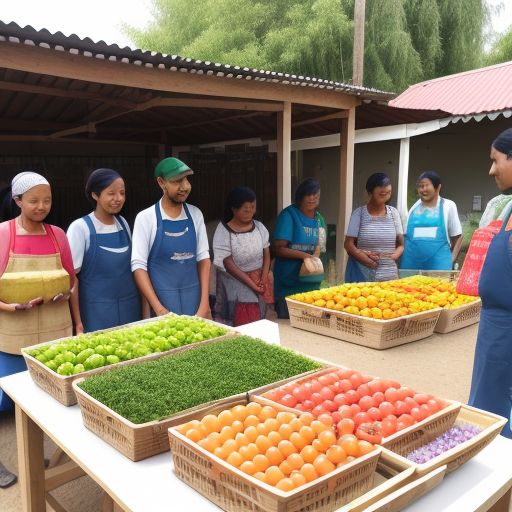
Businesses that focus on community engagement and empowerment are thriving in today’s interconnected world. Community-driven ventures prioritize collaboration, inclusivity, and shared goals, creating meaningful impacts that extend beyond profit margins. This blog explores how these ventures are reshaping industries and fostering sustainable growth.
Community-driven ventures are businesses or initiatives built around the needs and values of a specific community. They focus on mutual growth, where both the business and the community benefit. These ventures often emphasize social impact, inclusivity, and collaboration, making them a powerful model for sustainable development.
Co-operatives empower communities by allowing members to collectively own and operate businesses. They prioritize fair wages, equal decision-making, and local growth, making them a cornerstone of community-driven initiatives.
Crowdsourcing platforms like Kickstarter and Indiegogo bring communities together to fund innovative ideas. These platforms give individuals a voice and stake in the projects they support, fostering collaboration and creativity.
Social enterprises like TOMS Shoes or Warby Parker prioritize giving back. For every product sold, these businesses support initiatives like clean water access or vision care, directly benefiting communities.
Community-driven ventures focus on sourcing materials locally or through fair trade, ensuring ethical practices and supporting local economies.
Many ventures organize free or affordable training sessions, skill-building workshops, or educational programs to uplift local communities. These initiatives often target underserved populations to close gaps in education and employment opportunities.
Crowdsourcing is a pivotal innovation in community-driven ventures, enabling entrepreneurs to harness the power of collective support. Platforms like GoFundMe and Patreon give individuals a chance to contribute to causes or projects they believe in. This approach not only secures funding but also builds a loyal, invested community around the venture.
For example, a local bakery aiming to expand its offerings with gluten-free products can launch a crowdfunding campaign. In return, contributors receive perks such as discounts, product samples, or personalized thank-you notes. This strategy fosters a sense of belonging and ensures that the venture aligns with the community’s needs and values.
Crowdsourcing also offers transparency, as contributors can track how their funds are being utilized. By leveraging the collective power of the community, ventures can achieve goals that might have been impossible with traditional funding methods.
Retail spaces designed to serve local communities—such as farmers’ markets, local artisan shops, or shared maker spaces—are growing in popularity. These ventures strengthen the local economy while fostering social connections.
Some businesses partner with communities to address environmental challenges. Tree-planting drives, clean-up initiatives, and conservation projects are examples of how ventures can positively impact both people and the planet.
Platforms like Airbnb and Uber rely on community participation. By allowing individuals to share their resources, these ventures create economic opportunities while promoting collaboration.
Community-driven ventures often combine profit-making with social goals. For example, subscription-based services that donate a portion of their revenue to charitable causes have gained traction in recent years.
Ventures that celebrate and preserve local culture, art, and traditions play a vital role in community development. These initiatives help keep heritage alive while fostering pride and unity within the community.
One great example of community-driven ventures are local co-operatives which is defined as a business model that is owned and run jointly by its members. These initiatives de-emphasize profit maximization, putting its members first and equitably distributing both the benefits and decision-making power.
Agricultural co-operatives, for example, enable farmers to combine resources for better access and pricing in the marketplace. Through your members working together, negotiating with buyers and suppliers can become far more impactful, increasing revenue and decreasing costs. Housing co-ops are like republics where lower-income citizens can use sweat equity to get affordable housing.
Co-operatives help local economies through profit retention in the community. When traditional businesses make profits, their owners are often external shareholders, but co-operatives reinvest their returns into the venture or distribute them among members. This encourages economic resilience and shared prosperity.
In an age where inclusivity and sustainability are top-and-centered, local co-operatives shine as a model of equitable growth. Through their work, they are enabling individuals and enriching communities — the very definition of community-driven initiatives.
1. What are community-driven ventures?
Community-driven ventures are businesses or initiatives focused on the needs and growth of specific communities. They prioritize collaboration, inclusivity, and shared benefits.
2. Why are community-driven ventures important?
These ventures strengthen local economies, foster social connections, and address community-specific challenges, creating long-term sustainable growth.
3. How can businesses become more community-driven?
Businesses can engage with local communities, adopt fair trade practices, support local sourcing, and involve community members in decision-making.
4. What are examples of community-driven ventures?
Examples include local co-operatives, social enterprises, shared economy platforms, and cultural preservation initiatives.
Community-driven ventures are redefining the relationship between businesses and the communities they serve. By prioritizing inclusivity, collaboration, and shared growth, these initiatives create meaningful and sustainable impacts.
Ready to make a difference in your community? Start building a community-driven venture today and be part of the change.